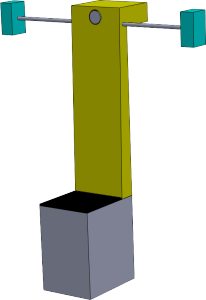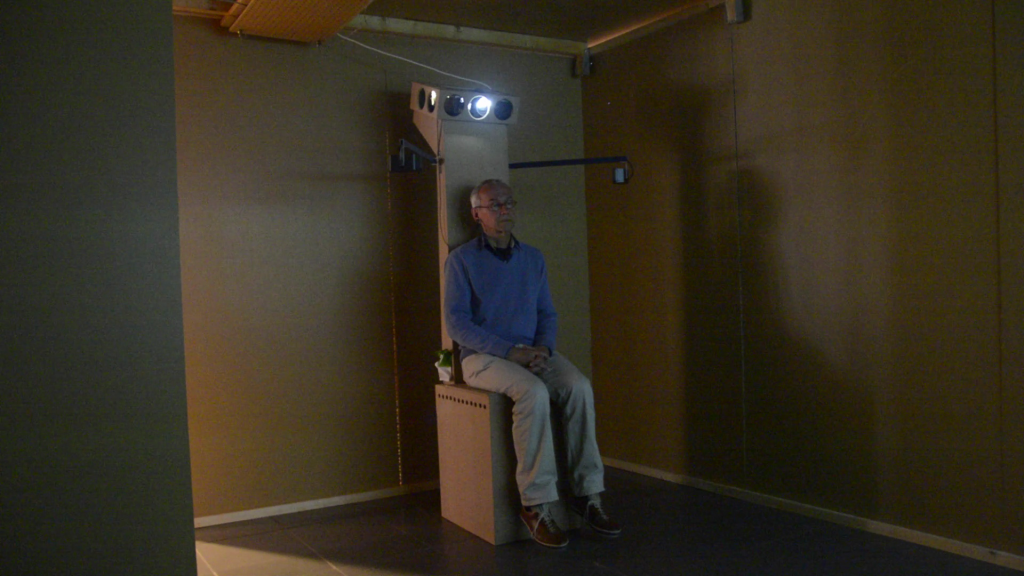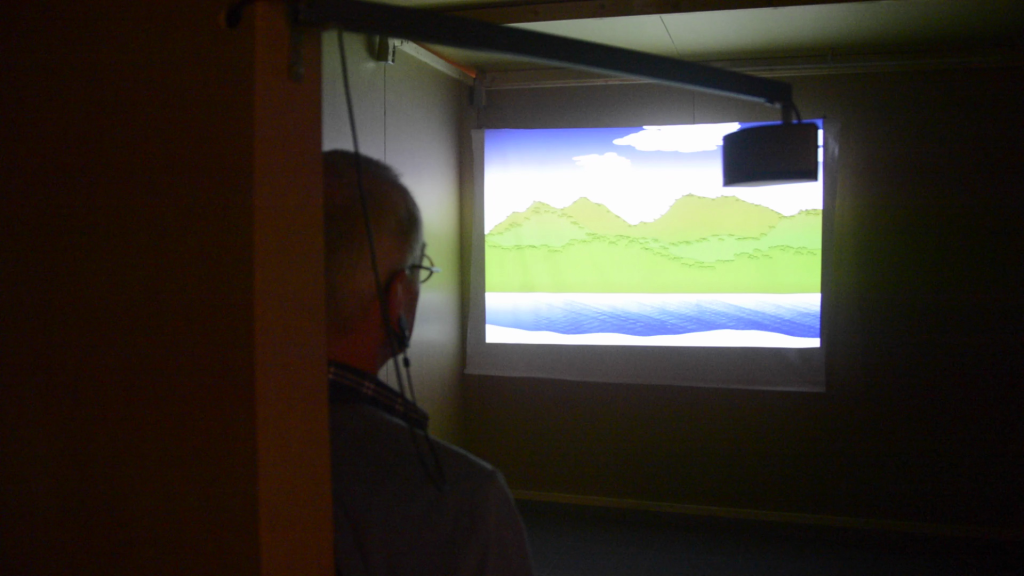During the discussion with the hospitals it became clear that I couldn’t just put my stuff in a room and leave it there, especially as the space was open to the public all day. So I had the idea of building a piece of furniture that would act both as a chair and a chest for the hardware. As it seemed rather complex to integrate everything in a foolproof manner, I contacted DIY wizard Aloys.
We discussed the basic requirements and decided on a building a sketch first on which we could improve in a future version. Of the essence was integration of PC, sound system, beamer and heart-rate sensor. It had to be stable and elegant at the same time. The chair also should act as an on-off switch, detecting user presence. Of course time and budget was limited. So Aloys first made a CAT drawing. He also made a cardboard sketch.

I wanted the operation of the installation to be simple, a one switch interface to switch the complete installation on and off. We managed that using a rod to prod the big switch of the PC, this acted as a primitive key for the staff. Aloys also provided a lock so I could open the chair and get to the hardware and electricity supply if that was needed. The mouse and keyboard were also locked the chair, making it impossible to stop the program without the rod key.

The installation showed a static image of the animation is no one was using it to attract attention, also some wind sounds are heard. The software saves a still every minute so a different image appears after each use. Once a user sits down (detected by a hardware switch using Arduino) she is prompted to attach the clip of the sensor to her earlobe. When the sensor is detected the animation and soundscape starts. The speakers are integrated in the chair and create a very spacious and lifelike sound. This creates a strong sense of presence. Users can stay and enjoy the installation for as long as they like.
When they get up the animation freezes and the sounds mute except for the soft wind sounds.
Most people found the experience relaxing and enjoyable. Some software issues emerged that I’m solving now. The chair was not very comfortable so that is something we will work on in the next version. Users weren’t very clear how the heart-rate was visualised. I’m improving that, creating more links between the audiovisuals and the physiological data without distorting the landscape feeling.
I also want the next version to be more mobile. That way I can easily take it for a demonstration.
